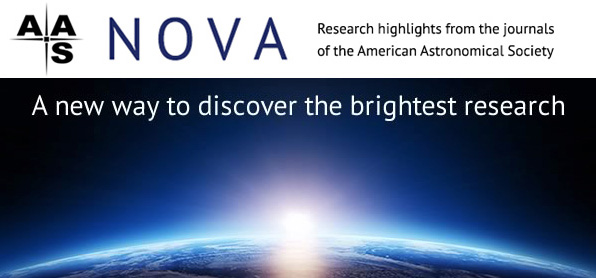Highlights from AAS Nova: 22 January - 4 February 2017

Susanna Kohler American Astronomical Society (AAS)
AAS Nova provides brief highlights of recently published articles from the AAS journals, i.e., The Astronomical Journal (AJ) and The Astrophysical Journal (ApJ), ApJ Letters, and ApJ Supplements. The website's intent is to gain broader exposure for AAS authors and to provide astronomy researchers and enthusiasts with summaries of recent, interesting research across a wide range of astronomical fields.
The following are the AAS Nova highlights from the past two weeks; follow the links to read more, or visit the AAS Nova webpage for more posts.
3 February 2017
Resolving the Birth of High-Mass Binary Stars
For the first time, scientists have imaged a very young, high-mass binary system and resolved the individual disks that surround each star and the circumbinary disk surrounding the pair.
1 February 2017
A Quasar Turns On
A quasar has been caught in the act of rapidly switching on. What caused the sudden transition?
31 January 2017
Bulges Are Red, Disks Are Blue…
Astrobites reports on the different colors of galaxies and what they tell us about galaxy evolution.
30 January 2017
UV Habitable Zones Further Constrain Possible Life
The possibility of liquid water is not the only thing that determines where life is most likely in the universe! Ultraviolet radiation also plays an important role.
27 January 2017
Hi’iaka: Haumea’s Rapidly Spinning Moon
Hi’iaka, the largest satellite of the dwarf planet Haumea, spins much more rapidly than expected. What does this tell us about its formation?
25 January 2017
Destruction of a Magnetized Star
New simulations show what happens when a magnetized star is torn apart by the tidal forces of a supermassive black hole.
24 January 2017
The Curious Case of Planetary Nebulae in Globular Clusters
Astrobites reports on several planetary nebulae unexpectedly discovered in globular clusters.
23 January 2017
Featured Image: The Birth of Spiral Arms
How are the arms of spiral galaxies like the Milky Way created? The gravitational pull of a galaxy cluster might play a role.


